The world is a wonderful, kaleidoscopic place filled with entertaining diversion, from TikTok and texting to Judge Judy reruns, squirrels, and literally ANYTHING other than studying. With all that distraction, it's no wonder you have no motivation to study for exams.
Somehow, in a life steeped in instant gratification, flashing digital images, and vapid celebrity gossip, we now need to put aside our devices, pull out our black-and-white textbooks, and study. Why? So that we can pass our exams, graduate, get a career, and win at life.
If only study motivation were so easy.
No amount of logic, reason, or even downright fear can snap you out of the funk that holds your focus hostage at times. As a consequence, your grades and professional exam scores can end up being an unfair representation of your ability.
This can end today.
As a follow-up to our complete guide to how to study effectively, this article explores why it’s so hard to find the motivation to study and then how to find the motivation to study by manipulating yourself into making smarter decisions today for a better you tomorrow.
It all begins with two people ...
“Future You” meets “Right Now You”
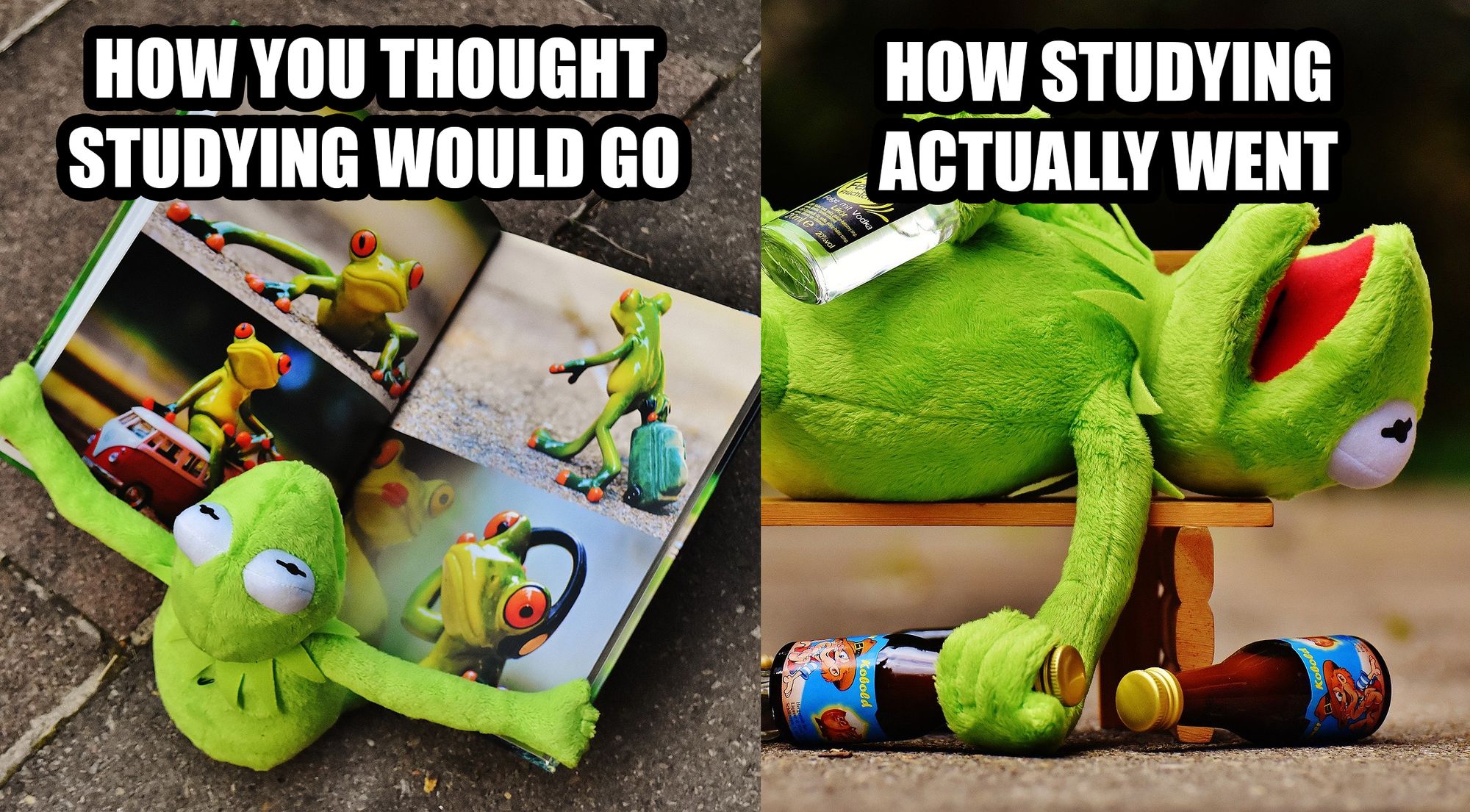
“Future You” has real ambition. “Future You” wants to buckle down, start studying months before your exam, and pass your subjects with flying colors so that you can embark on a wildly successful career.
But at this very moment, you are not “Future You”. You are “Right Now You” and “Right Now You” would far rather binge-watch Grey’s Anatomy ... or make a peanut butter and jelly sandwich ... or scroll TikTok … heck, you’ll even settle on doing the laundry.
Anything but study!
You see, “Right Now You” likes things that are immediately gratifying. It doesn’t give a hoot about things that are gratifying many weeks, months, or years in the future—like graduating and landing a sweet job offer.
In fact, so prevalent is this battle between “Future You” and “Right Now You” that cognitive scientists have come up with a suitably sciencey-sounding name for it: hyperbolic discounting.
It’s one heck of a complicated name for something that we’re all totally familiar with and do on a daily basis. Hyperbolic discounting is a cognitive bias, where people choose smaller, more immediate rewards rather than larger, later rewards.
In other words: it’s the reason you tend to make terrible life choices, like watching Netflix, rather than preparing for your huge upcoming exam.
As if the term “hyperbolic discounting” weren’t nerdy enough, Brainscape's team of cognitive scientists distilled the internal battle between “Future You” and “Right Now You” down to an equation of motivation. They did this using quantitative and qualitative data acquired from the study habits of our popular flashcards app’s millions of users.
The goal of such an exercise?
To understand the precise variables that determine whether or not you feel motivated enough to study at any given moment. And the reason that’s useful is because if you know what variables are getting in the way of you finding the motivation to study, you can address them, even eliminate them, and study right NOW!
Here’s what Brainscape’s study motivation equation looks like:
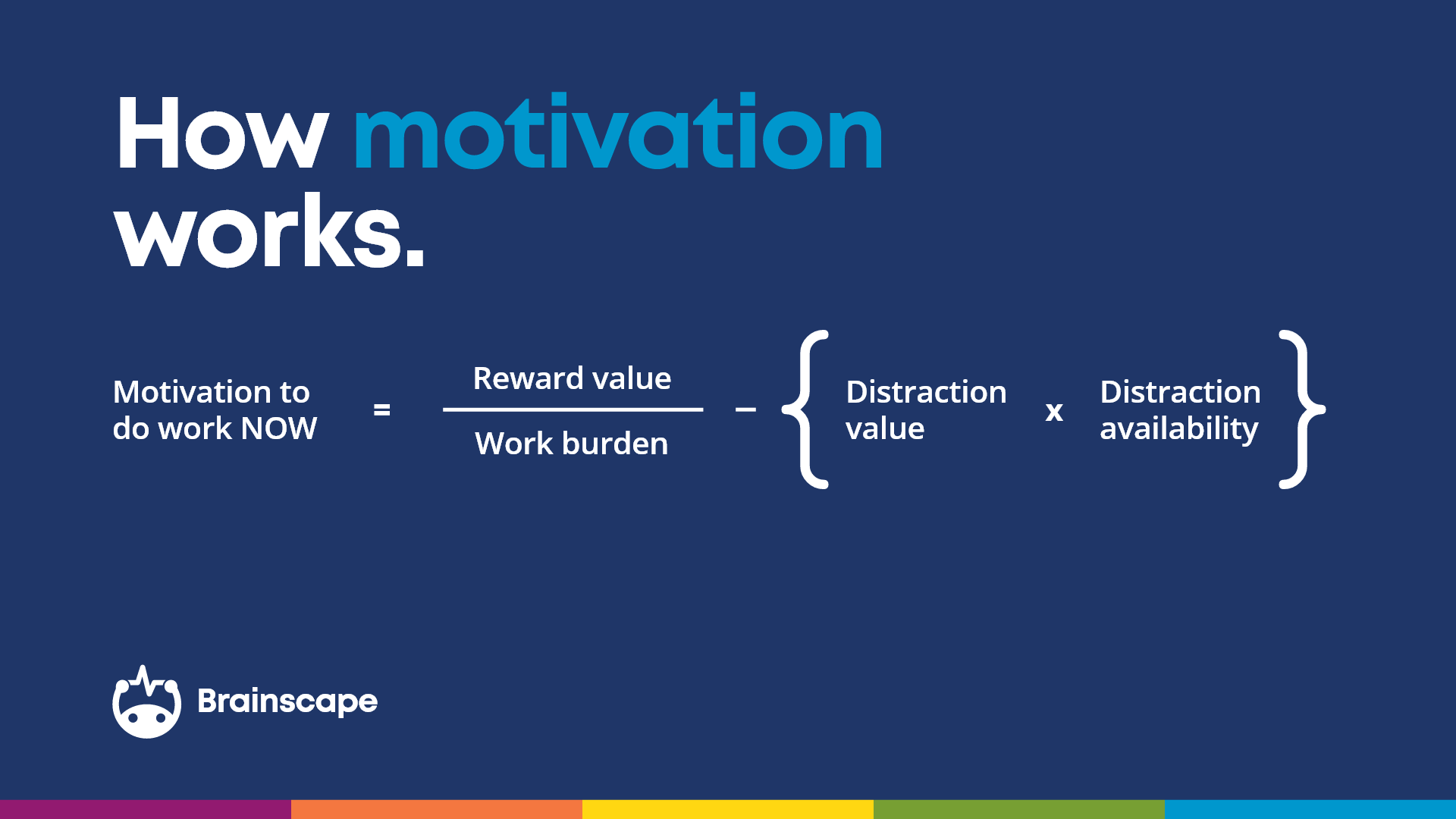
The “reward value” is the positive outcome you experience after dedicating time and effort to a task. In terms of study motivation, “reward value” could be high grades, getting into the best schools, acing your professional certification, getting a raise, or becoming fluent in a language, etc. The higher your “reward value” the more motivated you will be.
Makes perfect sense, doesn’t it?
Unfortunately, “reward value” is greatly diminished by the “work burden”, which is the amount of time, energy, and mental effort it takes to accomplish that task.
To make matters worse, “work burden” comes with a posse of friends called “distraction”, which is the product of “distraction value” (how big or small that distraction is) and “distraction availability” (how often it’s likely to distract you).
To illustrate:
- An individual message notification on your phone is a distraction with a small value.
- The availability of that distraction is much greater if you keep your phone with you while you study.
In the context of this equation, the more attractive and available your distractions, the more they detract from the “reward value”, which, if you remember, is very valuable to Future You. At a certain point, the magnitude of the distractions can become so large that they actually outweigh the burden-adjusted reward value.
When that happens, you get negative motivation. And we all know what that feels like …
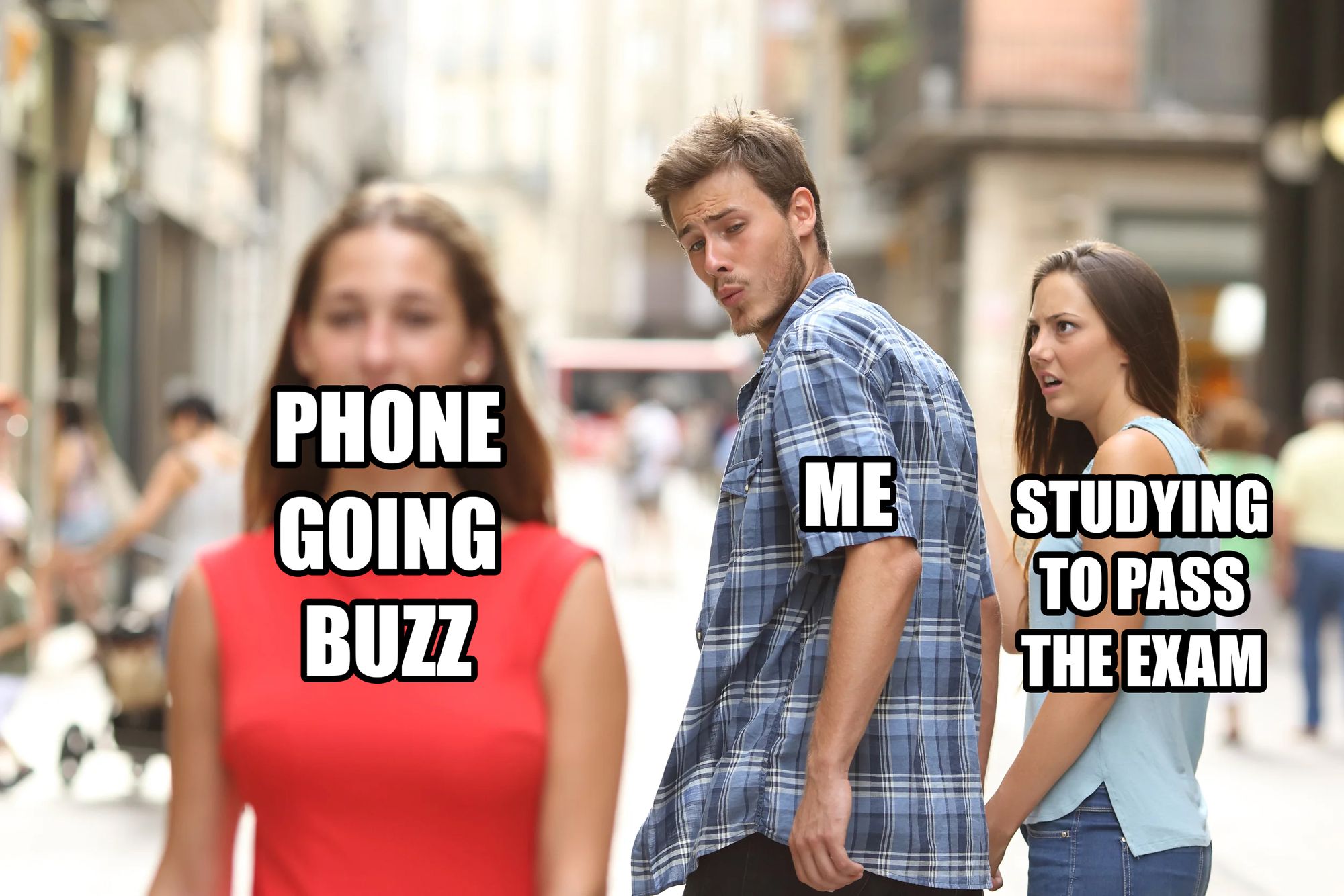
It’s pure math, bro.
Of course, this should all make sense to you. We didn’t really have to show you this nerdy equation to convince you that mental effort and distractions are getting in the way of you feeling motivated to study. But the reason we did is so that you can understand how to manipulate each variable in this equation to tilt it in favor of “reward value” and, ergo, positive study motivation.
Now that we’ve tormented you with a little math, let’s help you optimize each variable in that equation so that you can effectively manipulate your brain into feeling motivated to study.
1. Increase your reward value: visualize the carrot

1.1. Improve your intrinsic study motivation
We're often bad at valuing longer-term rewards. Getting good grades and setting yourself up for a great job are all things that “Future You” wants and can benefit from. “Right Now You”, however, feels that it will benefit more from playing video games or hanging out with Boo. To “Right Now You”, the rewards of studying can be so far in the future that they feel obscure, even impossible, and shrouded in uncertainty.
You can fix that by visualizing that long-term reward.
Visualize yourself with that graduation gown on, qualification in hand, and your whole damn future ahead of you. Be ambitious in your visualization—flesh the dream out in your head so that it has a beating heart and blood running through its veins! Take it so far that you can smell the ink on that job contract and see the zeros in your bank account on payday.
Now ... come back to the present.
This is a crossroads for you. Right now, you can falter in your exam preparation or you can suit up and do the damn thing. Every day is an opportunity to take a single step towards that incredibly sexy future you’ve envisioned for yourself, whatever it looks like. Dropping the ball today, however, leaves you one step behind where you would have been if you had chased that carrot like a donkey on a diet.
Put words to your dream and, every day—especially when you’re struggling to find the motivation to study—repeat it to yourself like a mantra:
“I’m studying today because (for example) I want to become a nurse, because I want to help people, and because I’m passionate about medicine. (Also, being surrounded by hot doctors doesn't hurt.)”

This daily visualization transforms a hazy, distant ambition and makes it as intrinsic a part of you as the red blood cells in your veins. In doing this, “Future You” merges with “Right Now You” and this puts your study motivation into high gear.
Pro Tip: Tell everyone about your goals. Accountability is a huge motivator because we are evolutionarily hard-wired to avoid social shame. Also, keeping a finger on the pulse of your study metrics can be a huge motivation because it allows us to visualize our progress toward our goals.
Remember, success is an accumulation of great daily habits and not just some lucky or privileged thing that you can achieve later, after having procrastinated. If you ever doubted the impact a tiny daily effort has in the long term, over a year, for example, just look at the following equations:
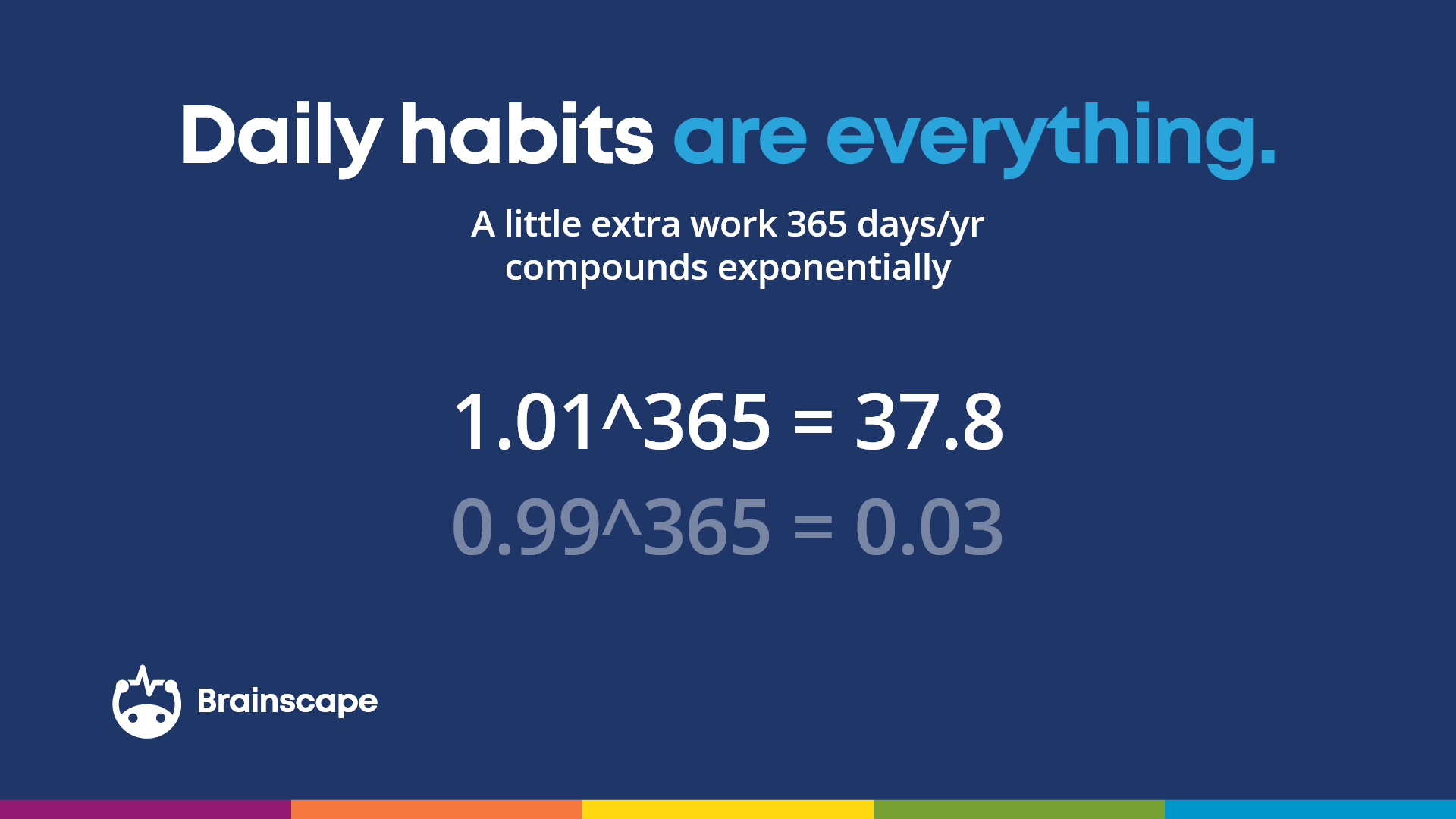
Feel free to print out this poster and use it as study motivation wallpaper!
1.2. Improve your extrinsic study motivation
We’ve looked inwards at what you can work on to improve your study motivation: visualize the rewards of the effort it demands. Now, let’s look at a few extrinsic or environmental variables you can use to manipulate yourself out of procrastinating.
One of the most effective ways of doing this is to set yourself short-term goals with a reward at the end. By dangling a carrot at the end of the effort—which could, for example, be a 30-minute study session or 10 minutes working through Brainscape’s flashcards for serious learners—you “gamify” the study experience, thereby making it more attractive to your brain.
I know, brains are such children.
Every time you achieve a mini-milestone in your studying, pause for a second, surf the dopamine rush of having achieved a goal, and then indulge in a little reward of your choice.
You can do this with just about anything but, be cautioned, some rewards are “stickier” than others. Emerging from the black hole of YouTube or any social media platform can be enormously difficult, particularly when it’s for something you don’t really want to do, like study.

Also, vary up your rewards. Our brains tend to be attracted to a Smartie Box of treats and diversions. Here are some great ideas for variable study rewards that don’t have the “suck-you-in” gravity of a neutron star:
- Small pieces of candy or, if you’re trying to be healthy, dried fruits like cranberries or mango. See: Gamifying my focus using snacks.
- Music, whether it’s listening to or playing an instrument.
- Go for a 10, 20, or 30-minute walk, and practice actively recalling what you studied in your previous session when you do.
- Treat yourself to a meal at your favorite restaurant.
- Arrange a social gathering with friends. You could even tell them that you’re only allowed to show up once you’ve finished studying: that way, you’ll have their support to get everything done in time.
- Buy yourself that book you’ve been salivating over ... or a new pair of shoes.
- Throw in a new study setting, like a coffee shop you’ve been wanting to try or even that hammock in your backyard.
You know what you like most, so it’s up to you to tailor your reward system.
1.3. How Brainscape helps with extrinsic study motivation
Brainscape has craftily worked our brains’ desires for extrinsic rewards into its web and mobile flashcard learning platform. After every 10-flashcard round, users hit a checkpoint screen that shows them how far they have progressed through the study material.
Here, you get to see both your percentage increase in mastery of the subject, as well as an updated estimate of how much study time you have left to reach 100% mastery. This is hugely motivating and can help you stay on track when studying for any knowledge-intensive subject.
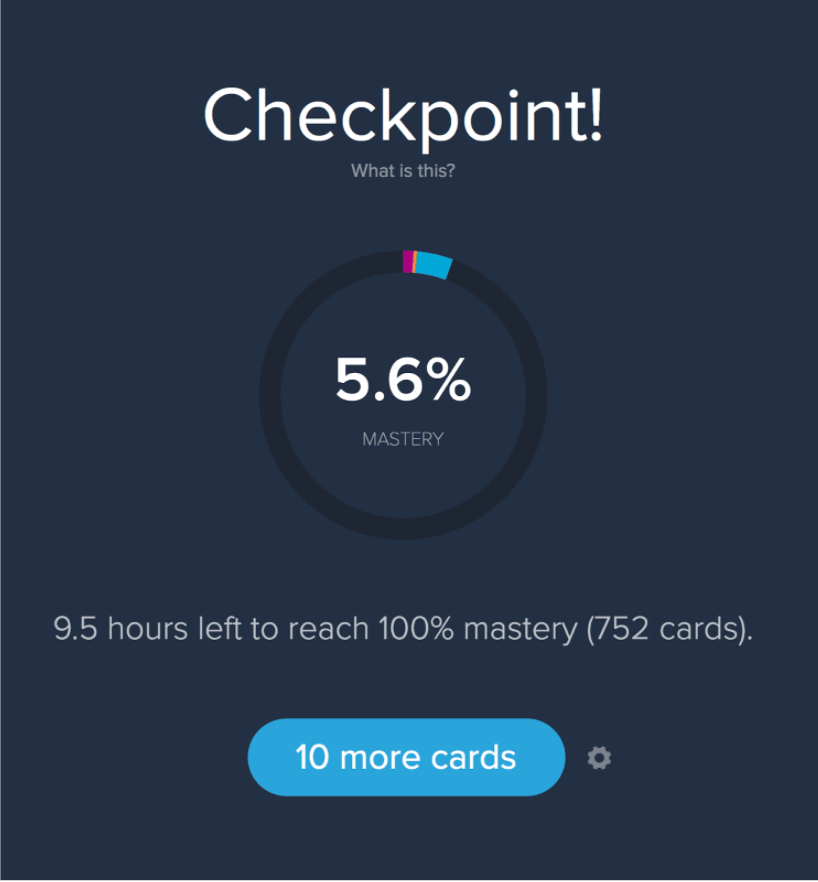
Whether you are studying one of Brainscape's certified flashcard subjects, flashcards made by your instructor or peers, or flashcards that you have made yourself, using a study app like Brainscape can be a great way to improve your extrinsic motivation!
2. Decrease your work burden to avoid procrastination
Sometimes, no matter how big or immediate those intrinsic and extrinsic rewards are, the burden of preparing for an exam can just feel too big. In fact, one of the main reasons students would rather run naked through a field of stinging nettles than study is because they feel so overwhelmed by the enormity of the task before them.
The question is ... why do we only seem to think this way when it comes to really important tasks, like preparing for an exam?
We can quite happily put in dozens of hours of "work" into video games like Minecraft or Roblox, building villages and mindlessly killing goblins to acquire points. But, somehow, long-term motivators like graduating with honors doesn’t light a fire under your arse.
The reason for this is because these games—even the truly mindless ones like Candy Crush—are masters at illuminating short-term milestones.
Every effort you make pays off. In a matter of minutes, you can level up, win coins, and make real, tangible progress, and our brains hedonistically pickle themselves in the subsequent dopamine rush.
If only we were able to regard our real-life challenges with the same micro-goal-oriented eyes ...
As it turns out, you can! Probably not as effectively as video games do, but there are many tricks you can employ to decrease the perceived burden of studying and tilt that equation we spoke of earlier in our favor of positive study motivation.
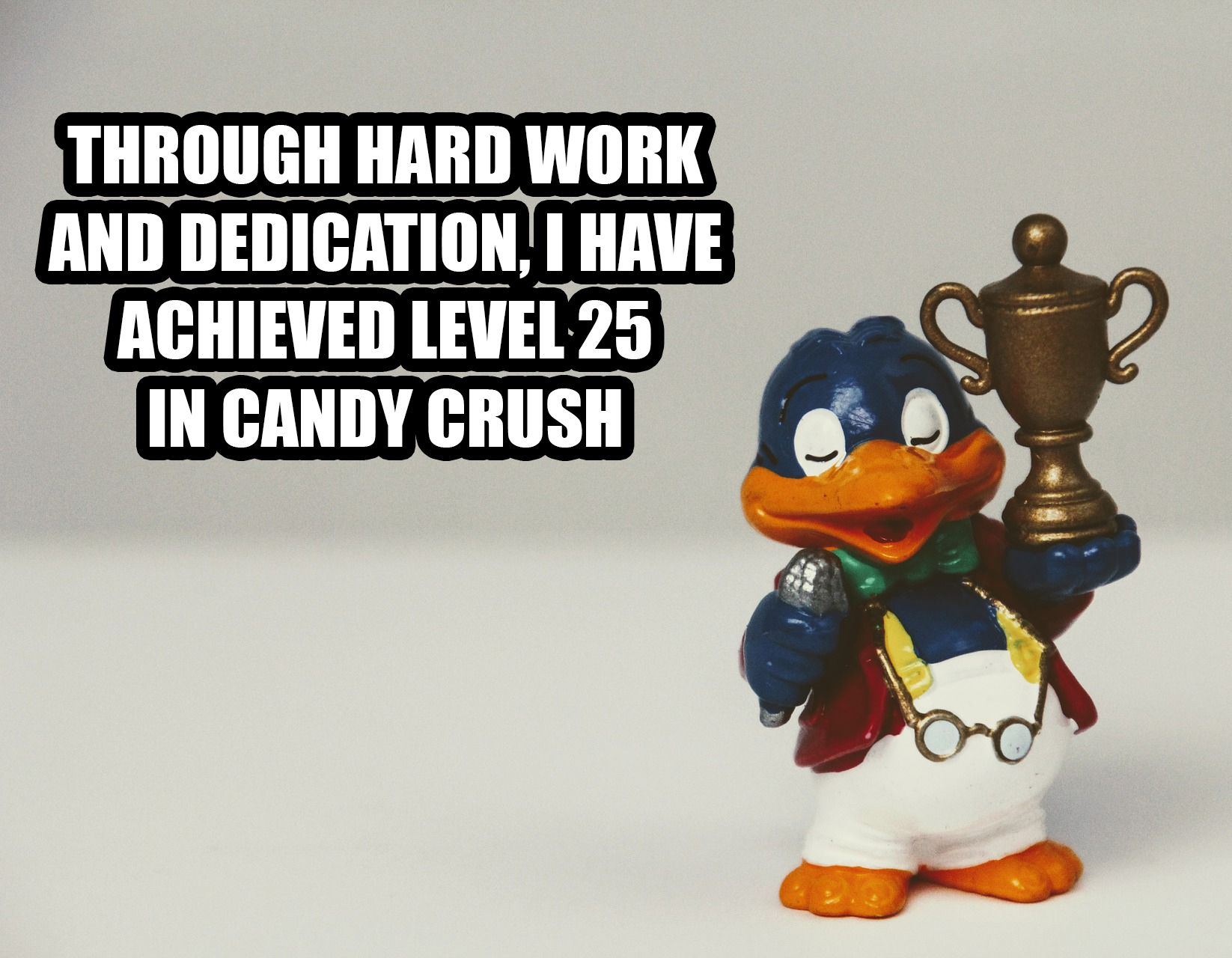
2.1. Establish a scorekeeping method: Level up!
Writing a 20-page paper about World War II and why Adolf Hitler was one of the most epic douchebags the world has ever seen may feel like a total schlep. Such a schlep, in fact, that anyone would be tempted to leave it to the last minute. That’s “Future You’s” problem, you think to yourself as you allow the next episode of Judge Judy to load.
If, on the other hand, you had to break your mammoth-sized paper down into levels, like a video game, it would probably make the entire process feel a lot easier. For example:
Level 1: Assemble all your information resources.
Level 2: Document rough notes from one source at a time (anything you think you might be useful in your paper).
Level 3: Establish your thesis statement.
Level 4: Write a rough outline of your paper showing your intended structure and an overview of the points you want to make in each section.
Level 5: "Tag" all your notes, indicating where in your paper outline they belong.
Level 6: Rewrite those rough notes into your actual paper.
Level 7: Revise the paper with fresh eyes after letting it sit for a day or longer.
By breaking that 20-page paper down into its various “levels” you’ve:
- Gamified the experience, making it more fun,
- Created an actionable plan to tackle the project, and
- Reduced that terrifying monstrosity of an assignment into a collection of easily achievable and approachable tasks.
And you can even reward yourself when you accomplish each milestone—hooray!
2.2. Break it down into bite-sized study sessions with Brainscape
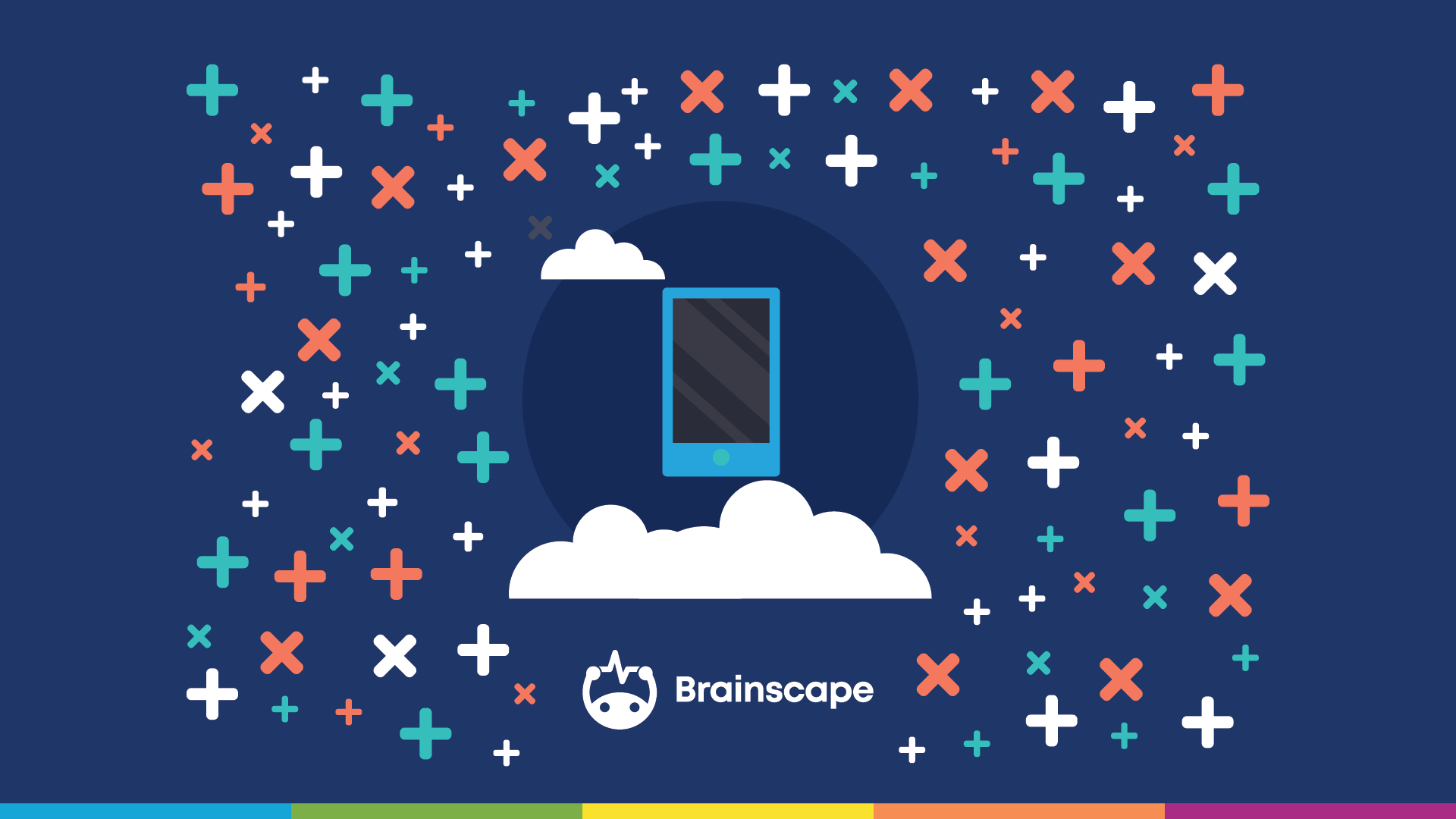
Similarly, let’s say you have to memorize a mountain of knowledge for an important final exam, such as AP Biology. In front of you is a 500-page textbook and at least 20 hours' worth of studying.
“Ugh, that sucks,” says “Right Now You”. “Let’s do it later instead.”
Sure that would feel better to “Right Now You” because that mountain of knowledge is intimidating. But rather than regarding the task as a singular, overwhelming challenge, try breaking it down into more achievable milestones that you keep score of as you progress.
Here's an example from Brainscape’s complete guide on how to study more efficiently:
Milestone # 1
Think about what's likely to be on the exam (refer to the syllabus, past examinations, and/or speak to your professor).
Milestone # 2
Gather together all your study materials, such as textbooks, lecture notes, video tutorials, and flashcards. By the way, if you don’t have the latter, check out Brainscape’s incredible collection of expert and user-generated online flashcards, or use our platform to make your own!
Milestone # 3
Skim through all the material’s headings and summaries only. Don't get sucked in: you’re only after that 30,000-foot view of your subject.
Milestone # 4
Read through one section or chapter at a time and condense the information into your own notes, paying particular attention to the information you don’t know or aren’t confident about.
Milestone # 5
One section at a time, re-organize all your condensed notes into "studyable assets" that you can address in even shorter sessions later. Think: outlines, concept maps, and flashcards. If you can somehow create these on your phone—which you can with Brainscape—you can study these assets absolutely anywhere you go.
And again, with Brainscape, you can find existing flashcards in our extensive marketplace. Brainscape works with publishers and subject-matter experts to create a diverse set of Brainscape-certified flashcard collections, for a spectrum of subjects. These collections have been vetted by huge teams of editors and educator reviewers to ensure that they are as comprehensive, accurate, and up-to-date as possible.
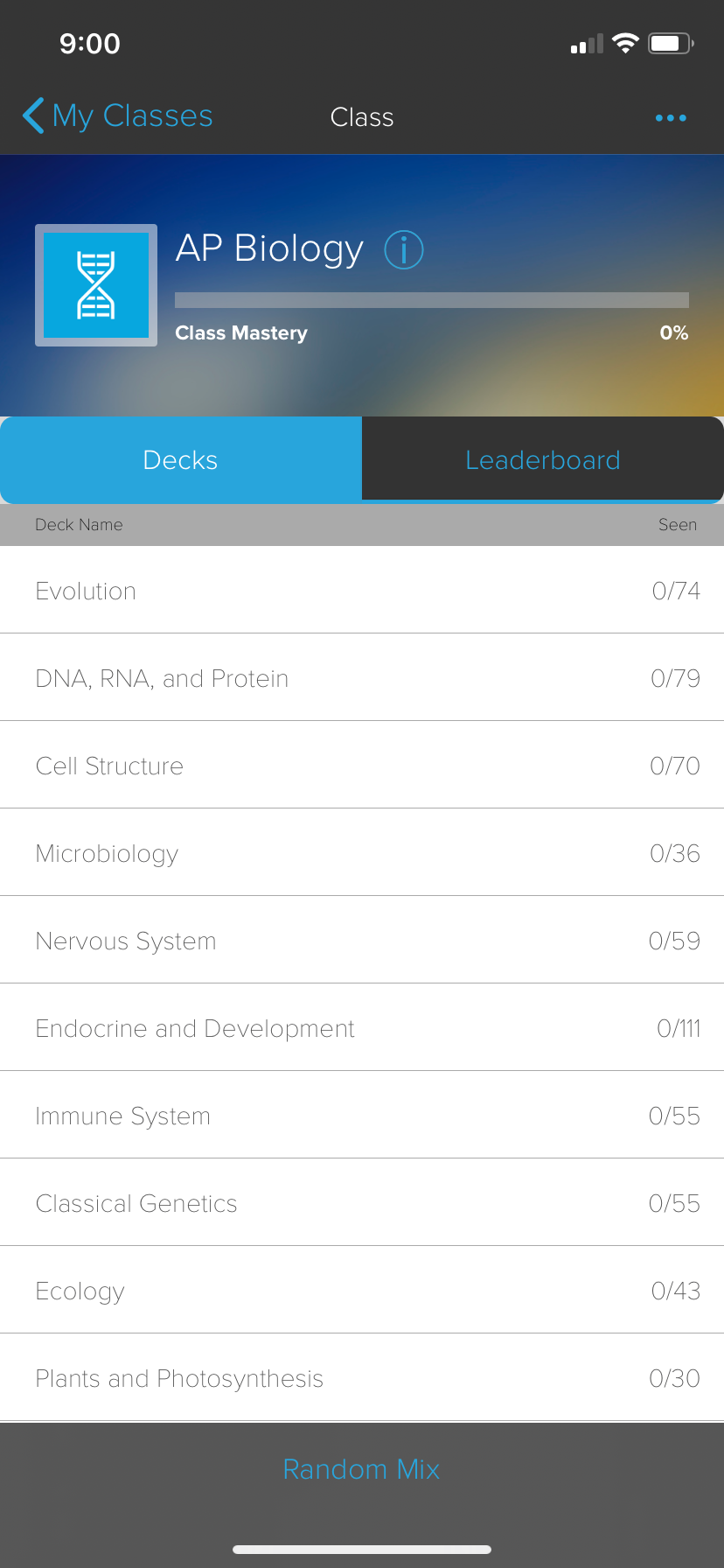
Even where we don't have certified content, we have a massive database of millions of user-created flashcard classes (groups of decks) that are easy to filter by subject tag or popularity. These flashcards are improving all the time as users continually suggest improvements to the original creators. Browse the Brainscape flashcard marketplace to see for yourself.
Milestone # 6
Throughout your day, pull out your phone and review your "studyable assets", even if it is just for a short 10-minute session while on the bus, waiting for your bath to run, or ...
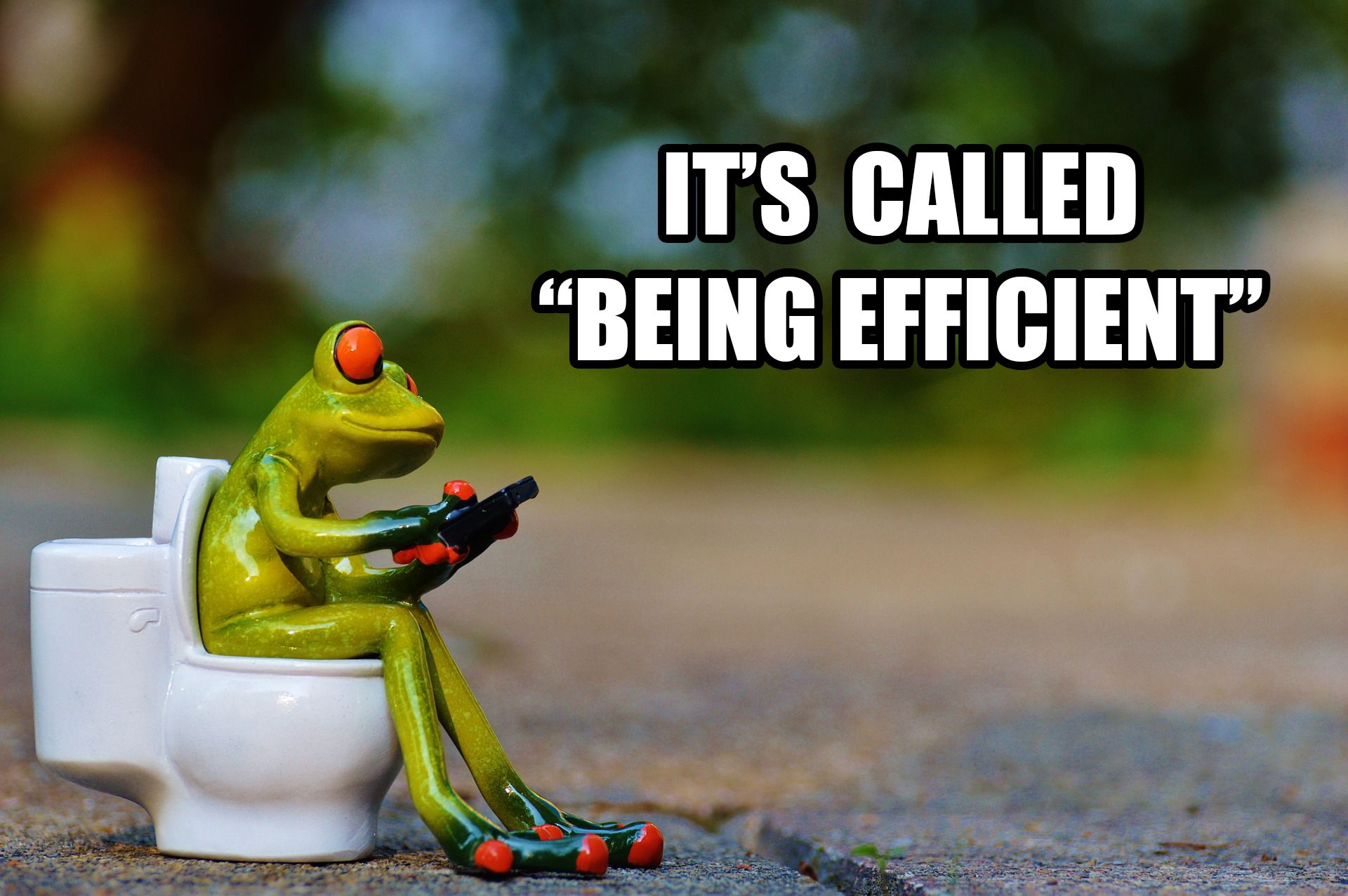
Brainscape delivers study sessions in short, 10-card flashcard rounds, which can literally take you as little as five minutes to complete. By sprinkling your day with a dozen of these kinds of mini-study sessions, you’ll onboard information and augment your knowledge far more efficiently than if you did staring at a textbook for three hours straight. Plus, it’s fun!
Milestone # 7
Watch your deck-specific progress meters in Brainscape tick upwards as you munch through the study material. It’s super motivating to have an actual, live gauge showing you how far you’ve come in your studies.
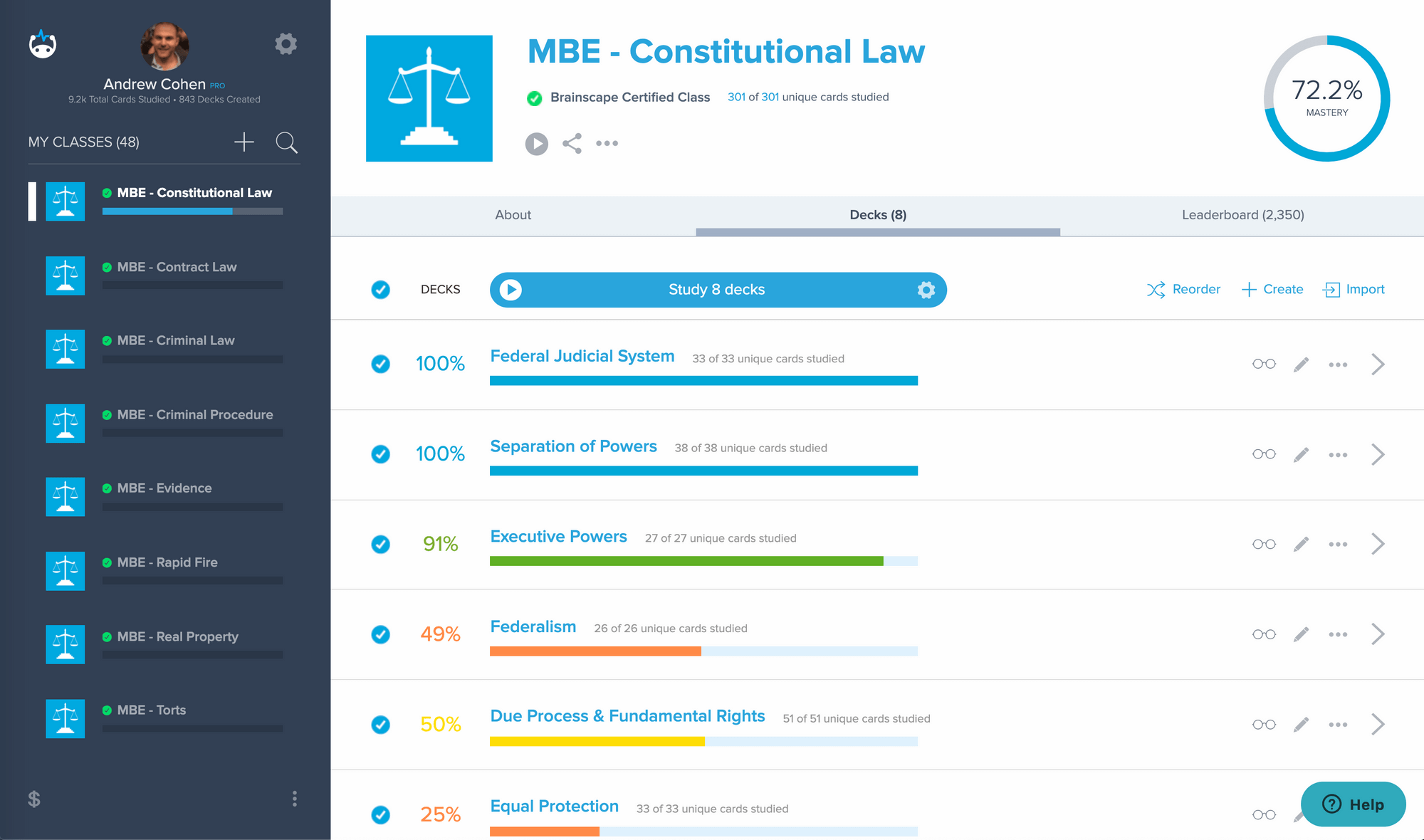
Milestone # 8
Once you're close to mastering a section or chapter, without looking at your notes, try to just recite everything you know from your head. Use the Feynman Technique by pretending you’re teaching the subject to a sixth-grader, simplifying it to its bare bone concepts in the process. This is a great way to make sure you really understand the material yourself!
2.3. Using feelings of motivation effectively
You are not always going to be in the perfect frame of mind to tackle the harder aspects of your studies, like the planning or memorization. You are also not always going to find yourself in the perfect setting to concentrate for extended periods of time. And so, rather than only studying when the universe comes together to create the perfect trifecta of motivation, setting, and time for you, read through your list of milestones and choose a task that best fits your current situation.
Let’s look at a few examples…
Example 1: Surfing the big waves of study motivation

The initial planning of all your study milestones (as described in the previous section) typically requires you to sit down for at least 30 to 60 minutes in order to really wrap your head around the scope of the task. So whenever a big wave of motivation strikes, use it for planning.
Similarly, any tasks that involve activities like deep reading, taking notes, outlining, or making flashcards are also likely to require you to be focused and with your study materials "spread out" around you. So save those milestones for when you’re feeling super motivated and are in the right setting with sufficient time to dedicate to studying.
You can also plan this time with intention and schedule it on your calendar, rather than waiting around for the feeling to hit.
Example 2: Surfing the doldrums of study motivation

If, on the other hand, you’re struggling to feel motivated to study, there are many milestones that require less focus and can be achieved in less time and/or on the go.
For example, tasks involving skim reading and creating chapter outlines. You can also whip out your phone and do a quick 5 to 10-minute flashcard session with Brainscape in whatever scraps of time you find yourself with. Brainscape’s web and mobile flashcard app is so easy to dip in and out of, it requires next to no inertia to squeeze in a study session. And, if you find yourself on a roll with your Brainscape learning, you can always continue on to the next flashcard round, and the one after that, working for as long as you like.
Another fantastic and effective technique for actively studying without any devices or materials at all is the Feynman Technique, which we introduced a little earlier on. It's the best way to solidify what you know and remind yourself of the concepts you might need to go back and revise.
2.4 Practice psychological warfare
Sometimes, just getting started is the hardest part. Especially when you’re in a face-off with one of the uglier, more taxing milestones that requires you to really focus. If the above-mentioned motivation-improving and burden-reducing strategies don't help you overcome this inertia, then it might be time to wage a little psychological warfare on yourself.
Repeat after me:
“You want a hot body?
You want a Bugatti?
You want a Maserati?
You better work, bitch.”
I’m just kidding.
Repeat after me:
“Hey, you! Yeah, I see you! Do you think binge-watching My Big Fat Fabulous Life is going to help you pass your medical exams? IT’S NOT! Only you can help you pass your medical exams! So get up off that couch, splash some water on your face, and commit yourself! This ain't no Netflix series and this ain’t no game ... this is your life! It’s time to show up!
Just don’t let your roommate catch you shouting at yourself in the mirror. It cannot be easy to write an exam in a straight jacket.
Another technique you can try is to give yourself to the count of 10 to get started, no excuses. And keep your goal small if you’re really struggling to feel motivated to study. Say: “In 10 seconds, I'm just going to do five minutes of work—just five—and then take a quick break to do something enjoyable."
Oftentimes, you’ll find that once you start you quickly get into the swing of things and continue for longer. Harness those small bursts of continued motivation tolerance when they come!
If all else fails, go for a short walk or run, or do some yoga exercises to clear your mind, reduce your stress, and improve concentration. Brainscape even has some great tips for exercising while studying.
3. Decrease the availability of your distractions
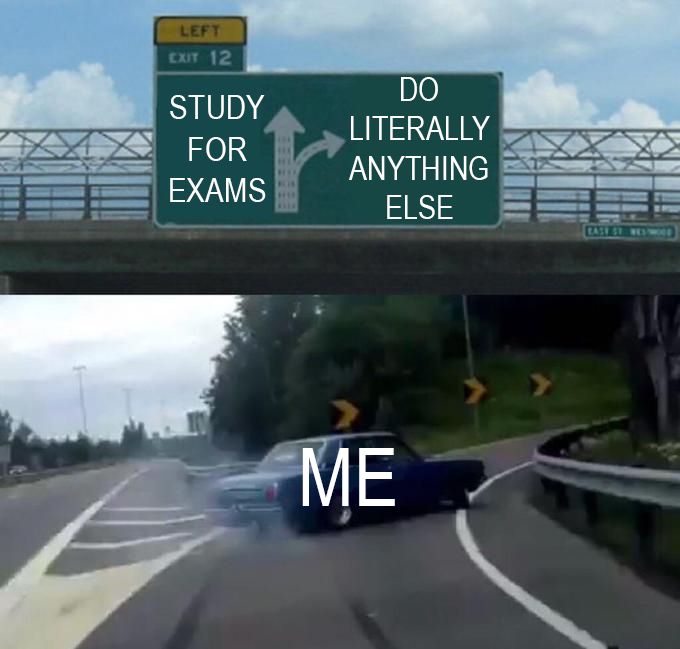
So far, we've been addressing the first component of our motivation equation, explaining how to increase the “reward value” while decreasing the “work burden” by breaking it down into bite-sized milestones or gamified levels. But even the noblest of intentions and efforts can be thwarted by the staggeringly prolific opportunities there are for instant gratification.
Why is it so hard to resist these temptations? Actually, it comes down to how you are primitively built.
Our limbic systems were shaped by thousands of years of evolution to help us survive in environments in which rewards were few and far between. Nowadays, however, rewards are so readily available and in such disgustingly gratuitous volumes that our brains are overwhelmed. They literally can’t handle how awesome everything is.
What we do know is that our propensity for distraction is hard-wired into every nerve cell so fighting against it takes a ton of energy and is often futile. Also, not all distractions have the same value for everyone. For example: trying to study when there’s cheesecake in the fridge ... with white chocolate ... a crumbly biscuit base ... and maybe a little passion fruit glazing ...
Sorry, where was I?
Oh, yeah, trying to study when there’s cheesecake in the fridge. If you love cheesecake, its distraction value is huge. If you hate cheesecake, you won’t care and it won’t distract you from your work.
Also, we can’t be friends.
So, if we really want our “motivation” to trump the “distraction” side of the equation, we’ve got to (1) identify what we find to be distracting and (2) avoid it like it has a fever and a dry cough.
Our friend Nir Eyal author of the book Indistractable (which you should check out if you haven't yet) says "Living the life you want requires not only doing the right things but also avoiding doing the wrong things."
In the context of preparing for exams, you can HACK your study environment to set you up for success. Here’s how …

Step 1. Choose your setting carefully. It should be somewhere relatively private and quiet where you won’t be distracted by the comings and goings of other people.
Step 2. Set out all your study materials, books, stationery, laptop, charger, water, snacks, and whatever else you need to learn. You shouldn’t have to get up for anything once you’ve started.
Step 3. Ask your housemates kindly for an hour or two of quiet while you focus on your studies.
Step 4. If you tend to be distracted by unattended emails, clear out your inbox before you begin. And if some of those emails require action, write up a to-do list so that you won’t forget. You can take care of it later.
Step 5. If you also tend to be distracted by phone notifications (and most people are), turn it on silent or block incoming notifications while you study so that it can’t ping and distract you. This is useful if you’re actually using your phone to study on Brainscape!
Step 6. Optimize your body and brain to study. Go to the toilet, fill up your water bottle, brew a cup of coffee or tea, set out your snacks, and get a good night’s rest the night before, so your brain is more amped to work and less distractible.
Step 7. If you do have important tasks that need to be done, like pay a bill or complete a homework assignment—tasks that are just going to distract you if you leave them unattended—knock them out before your allotted study time.
For a more comprehensive look at how to concentrate better and focus when studying, check out Brainscape’s article!
4. Making study motivation a habit

So ... now you know how to increase motivation to study.
In this article, we've given you tons of hacks to improve your process for a given study or project goal and to help you stay motivated and avoid procrastination. Yet some of these may still feel like they require effort and that’s perfectly normal. It’s because you’re pushing against the way things used to be—against the inertia of “Right Now You”.
But if you really internalize these habits, they can become a permanent part of your cognitive landscape, which will make study motivation an easy part of your daily duties. Brainscape has done a lot of research and written comprehensive guides, just like this one, on how to build good study habits. We greatly encourage you to make use of these resources in your preparation for your exams, your career, and your life.
The reins are in your hands ... all you have to do is hand them over to “Future You” and ride off into the sunset.
